The Rain Returns
March brought more rain after a dry February, with the San Luis Obispo CIMIS rain gauge receiving 5.75″ of precipitation. This helped increase the flow of creeks throughout our watershed and brings our total up to 12.36″ of rain since the start of the water year in October, 2019. Check out this link to learn more about water years, and to read some highlight about the 2019 water year.
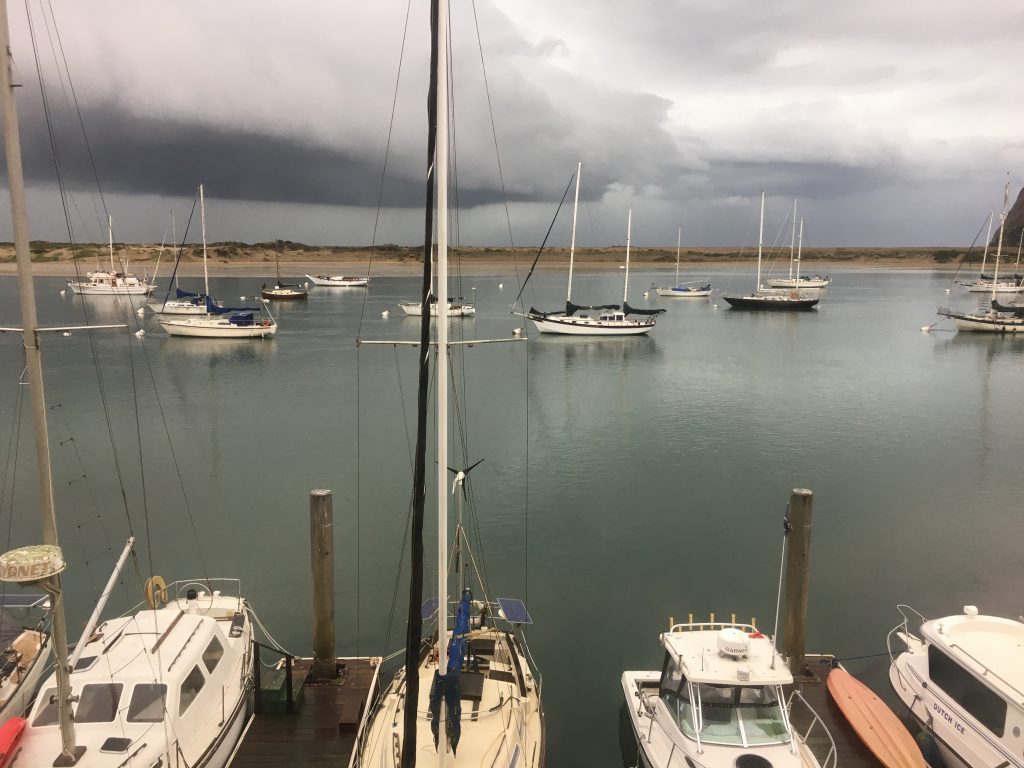
Surface flow and storm flow
Around Morro Bay, different creeks maintain varying levels of surface water flow. This means that some creeks have no visible surface water flow, even though there is still water in the creek below ground. For some, such as Los Osos Creek at Los Osos Valley Road (LOVR), periods of visible water flow are often intermittent during drier years. You can see the response of the creek to storms, referred to as storm flow, by monitoring the SLO County Stage Gauge. Watching the gauge during or after a storm can help you visualize what is happening in the creek. Surface flow, when water flows above ground in a creek, occurs when the water level passes 1.90 ft on the staff gauge. The pictures below reflect the dynamic hydrology of the creek.
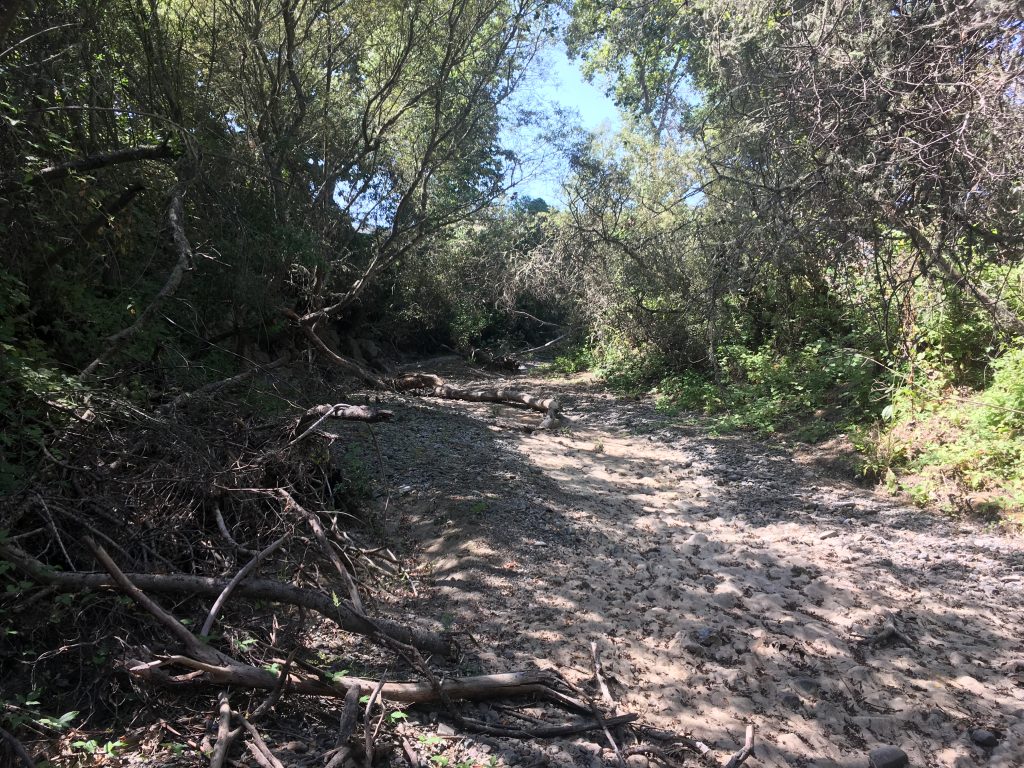
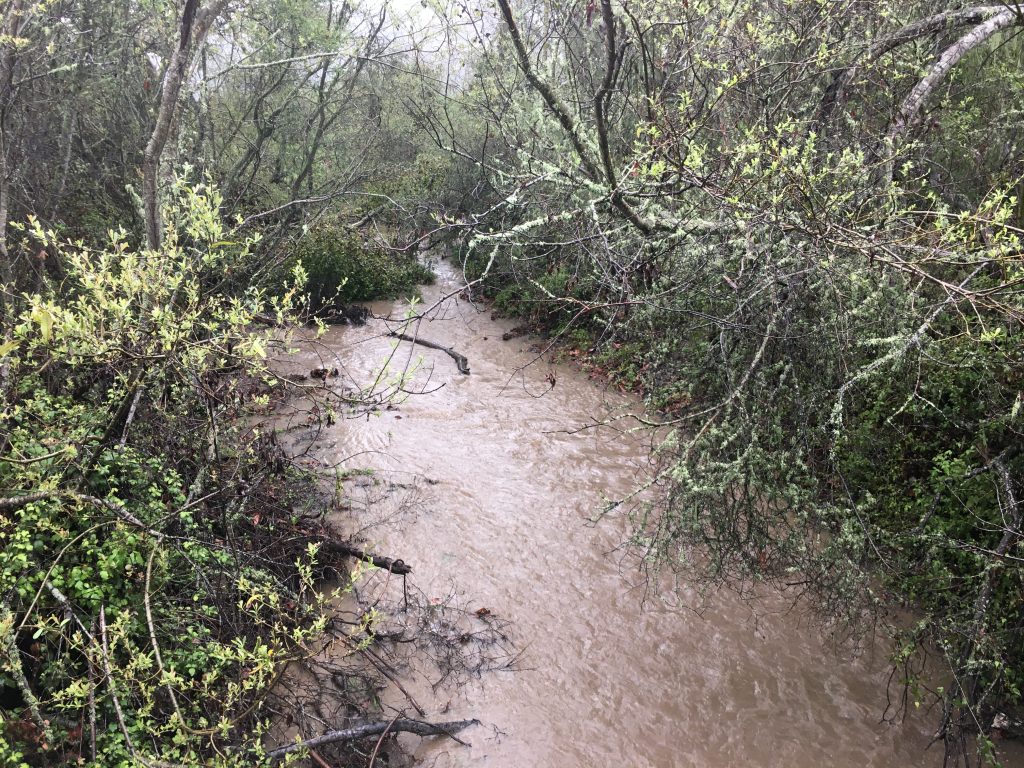
With more rain heading our way this weekend, maybe we are in for an Awesome April? Be sure to check out John Lindsey’s column in the San Luis Obispo Tribune to read his predictions for this storm.
Eelgrass Restoration
The Estuary Program successfully finished our 2020 intertidal eelgrass restoration efforts in early March. (Intertidal areas are sometimes below water and sometimes exposed to the air, depending on the height of the tide.) In total, we planted eelgrass at nine sites this spring, 25 one-meter by one-meter plots and 24 rebar/bamboo pieces. We expanded our restoration efforts to new sites away from the main channel and continued restoration efforts to create larger, more stable beds at locations where our past restoration efforts have succeeded.
The photos below show some of the restoration plots planted in March 2020 with volunteer support. Sinking in the mud won’t stop us!
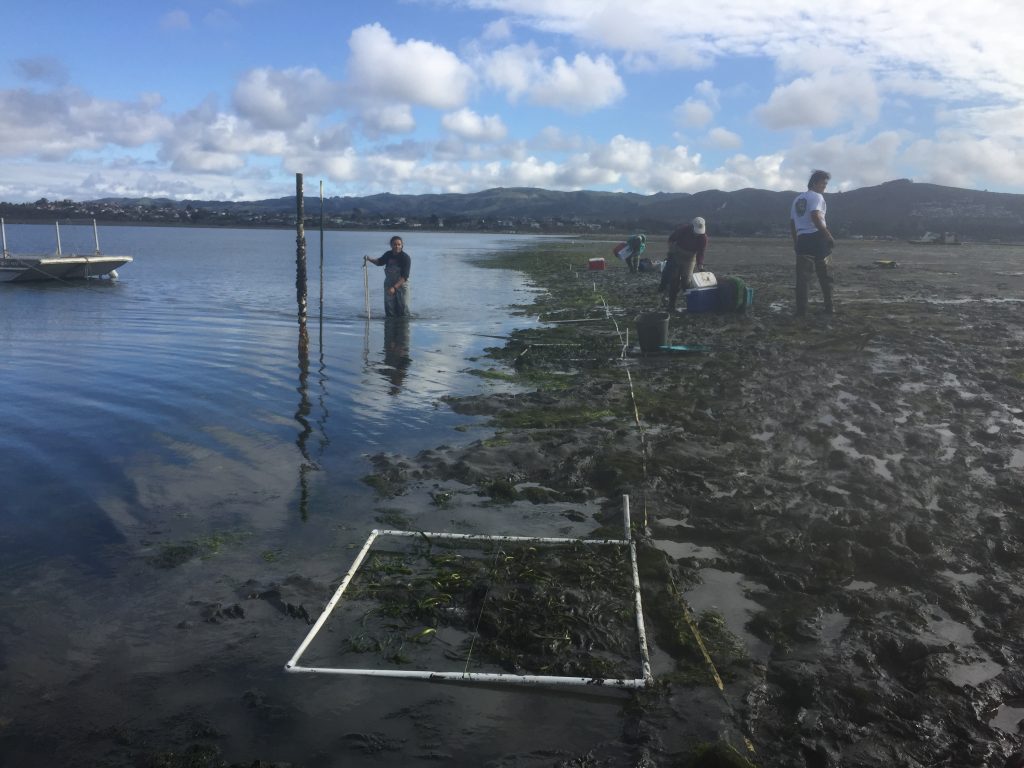
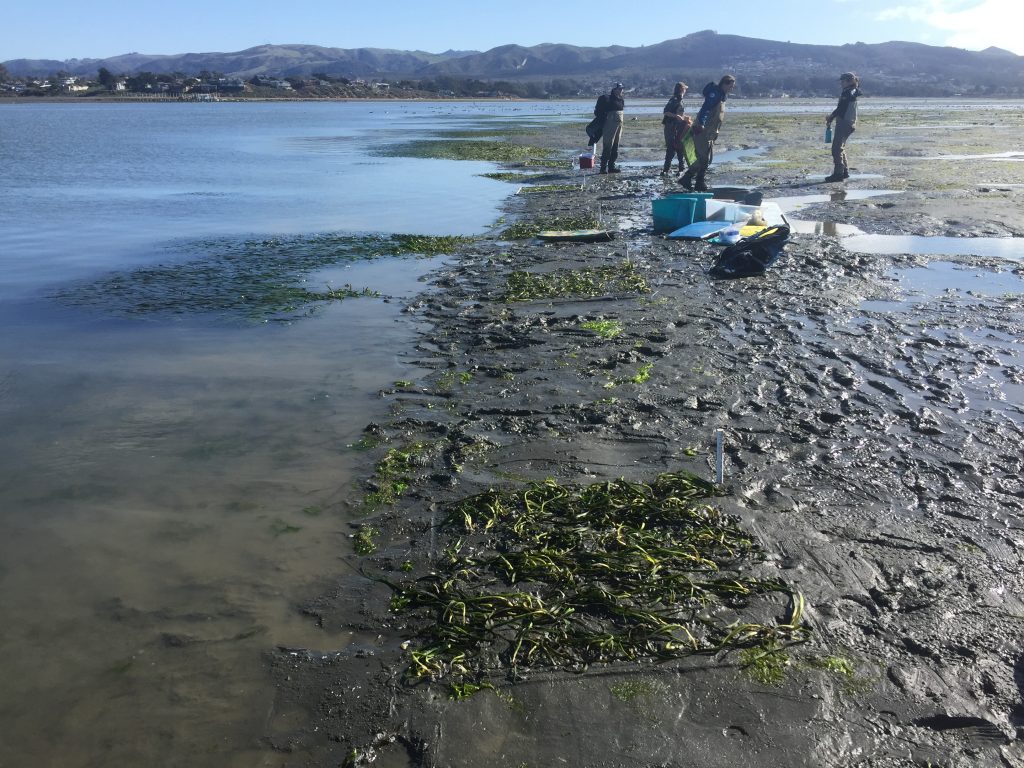
Some of the work we do would not be possible without the community support that we receive. For eelgrass restoration, community support comes in many forms, one of which is the shuttling of volunteers and staff across the bay to help with our harvesting and planting projects, pictured below.
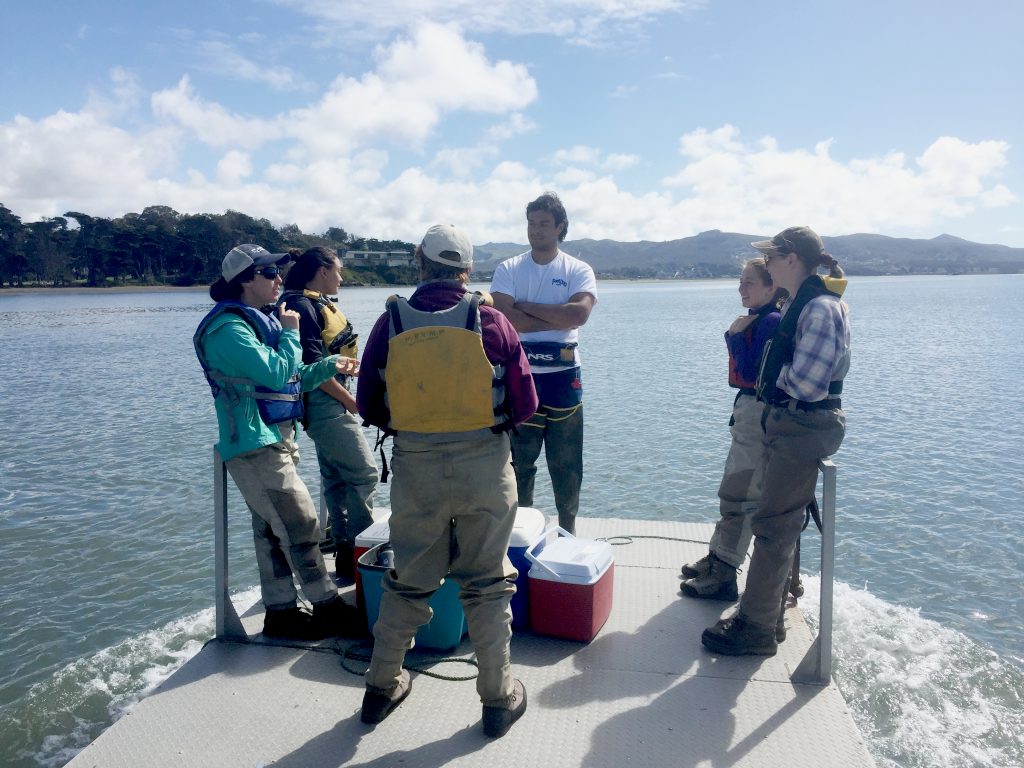
With harvesting and planting in the rear view mirror, we look forward to assessing the success of restoration efforts through future monitoring.
State of the Bay Gives Insights on the Health of Morro Bay
For more updated information on the health of Morro bay, check out our 2020, State of the Bay page! Our website now contains a series of video presentations embedded within the different topics addressed under the “Questions Answered in this Report” title. From shellfish farming to the heath of eelgrass beds, this resource provides an enhanced look at some of the most important aspects of Morro Bay.
Help protect and restore the Morro Bay estuary
- Donate to the Estuary Program today and support our work in the field, the lab, and beyond.
The Estuary Program is a 501(c)3 nonprofit. We depend on funding from grants and generous donors to continue our work. - Support us by purchasing estuary-themed gear from ESTERO. This locally owned and operated company donates 20% of proceeds from its Estuary clothing line and 100% of Estuary decal proceeds to the Estuary Program. Thank you, ESTERO!
- Purchase items from the the Estuary Program’s store on Zazzle. Zazzle prints and ships your items, and the Estuary Program receives 10% of the proceeds. Choose from mugs, hats, t-shirts, and even fanny packs (they’re back!) with our fun Estuary Octopus design, our classic Estuary Program logo, or our Mutts for the Bay logo.
Thank you for your support!